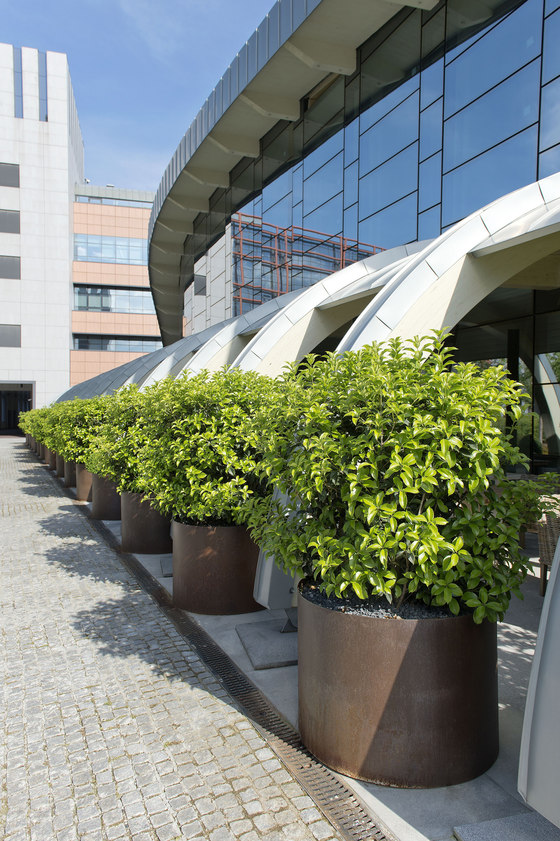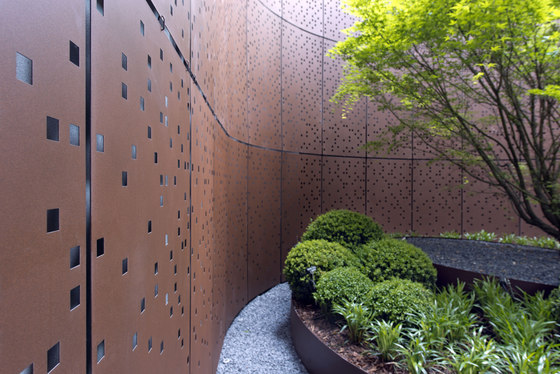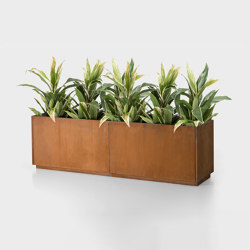The well-appointed design for the new Unipol headquarters in Bologna is developed across a vast area of about ten thousand square meters in Stalingrad Street, with the intent to redevelop an entire part of the suburbs, in a central position between the exhibition centre and the city. The project, which sees the Bolognese studio Frassinagodiciotto as a landscape designer, making the green areas as a connection between the individual architectural elements spread over the area. In this complex and structured context, the green becomes a design tool of organic forms having smooth and sinuous lines that are opposed to the well-marked rhythm of the vertical elements. The green spaces evoke sensations of softness that constantly recur in each of the main areas of intervention: the suspended square, the courtyard, the entrance area, the internal yard, the roof lawn that overlooks Aldo Moro Street, the green at the entrance and the external perimetral areas of the building.
The hanging square is developed over a rectangular area, but the design of the green spaces gives softness thanks to curved sectors and circular shapes. The organic forms that characterize the space generate important visual cones through a type of soft green and flowery, with areas of lawn, trees and shrubs of different heights.
The large inner courtyard is characterized for the presence of sinuous lines that define the space allowing a three-dimensional development: it creates horizontal passages alternating with soft dunes of lawn whose “soft” characteristics are emphasized by the presence, for example, of Pennisetum or Rosmarinus officinalis.
Continuing the visit we come to the part used as boardroom: four large Carpinus betulus “Pyramidalis“ - with corten steel plates at the base – are set in the space, creating a soft green filter between the access zone and the traffic of the road. On the front of the building, there is the Buxus sempervirens contained within tall vases in terracotta that indicate the access areas. Inside we find the usual harmonious environment also generated by a moderate but significant presence of the green. The strong verticality of the architectural volume is reflected in the vertical development of green elements and their containers, helping to create a set of elements in a perfect formal agreement.
The central element of the cavaedium area, which attracts the gaze and the centripetal forces that generates this circular space, consists of an Acer palmatum policormico.
The plant, of a considerable size, is located at the center of a space defined by walls of bronzed steel worked with a pattern of square laser-cutted holes, whose design fades in density from the bottom to the top.
The heights of the retaining carter create an interesting game in elevation, since the top are opposed and contrary one from another. Finally, to bring out the colors of the composition, a gravel floor has been added to a black ebony marble. In this context, the design studio also took care of the lighting, a light from the bottom going up, to delimit the space and to describe the botanical garden.
The models used in this project (poles and lamps having oblique lighting) are led with the express purpose of limiting consumption and maintenance costs.
The green roof that overlooks Aldo Moro Street sees the presence of various species including Hedera helix, Liriope muscari, Buxus sempervirens and Parrotia persica, creating a vibrant green space.
The species used for the outdoor perimeter in Felicori Street are trees of Carpinus betulus “Pyramidalis” positioned in corten pots resting on a thick base of Hedera helix .
Landscape designer: Studio Frassinagodiciotto































